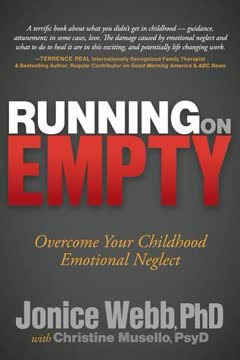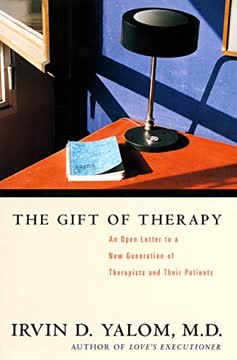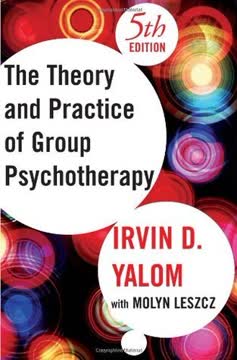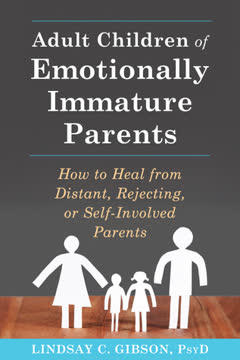Key Takeaways
1. The Internal Family Systems (IFS) Model: Understanding Your Inner Parts
"IFS recognizes that our psyches are made up of different parts, sometimes called subpersonalities. You can think of them as little people inside us."
Our inner world is complex. The IFS model posits that our psyche consists of various parts or subpersonalities, each with its own perspective, feelings, memories, goals, and motivations. These parts can be broadly categorized into:
- Exiles: Young, vulnerable parts holding pain from the past
- Protectors: Parts that handle the world and keep you functioning
- Managers: Strategic, organized parts operating in everyday life
- Firefighters: Impulsive, reactive parts responding to emergencies
All parts have positive intent. Even parts that seem problematic are trying to help or protect you in some way. Understanding this allows for a compassionate approach to self-exploration and healing.
2. Accessing and Unblending from Target Parts
"Unblending happens when you create space between you and a Target Part."
Recognizing and separating from parts is crucial. To work effectively with a part, you need to access it and then unblend from it. This process involves:
- Accessing the part through emotion, visual imagery, body sensations, or internal dialogue
- Creating space between yourself and the part
- Asking the part to contain its feelings so you can observe it objectively
Unblending allows you to interact with the part from a place of curiosity and compassion, rather than being overwhelmed by its emotions or beliefs.
3. Self-Leadership: The Key to Inner Harmony
"The Self is the agent of healing—the true leader of the internal system that can love and heal each part."
Cultivate Self energy. The Self is your core essence, characterized by qualities such as:
- Compassion
- Curiosity
- Calmness
- Clarity
- Courage
- Creativity
When in Self, you can effectively lead your internal system, making decisions and moving forward with balance and wisdom. Accessing Self involves centering exercises, grounding techniques, and consciously embodying Self qualities.
4. Working with Protectors: Guardians of Your Inner World
"Protectors take on their roles because of what has happened to them in the past."
Understanding Protectors is essential. Protectors play a crucial role in safeguarding your psyche, but their methods can sometimes be counterproductive. To work with Protectors:
- Access the Protector and unblend from it
- Develop a trusting relationship with the Protector
- Understand its role and positive intent
- Negotiate with the Protector to allow access to the Exile it's protecting
Remember that Protectors need to feel safe and appreciated before they'll consider changing their strategies.
5. Healing Exiles: Unburdening Past Pain
"A burden is an extreme feeling, memory, energy, or belief about oneself or about the world that a part has taken on as a result of childhood trauma, a specific incident, a relationship, or another painful situation."
Exiles hold the key to deep healing. Working with Exiles involves:
- Getting permission from Protectors to access the Exile
- Witnessing the Exile's story and validating its experiences
- Reparenting the Exile by providing what it needed in the past
- Unburdening the Exile through a symbolic release of pain
This process allows Exiles to release their burdens and transform, leading to significant shifts in your overall well-being.
6. Reparenting and Retrieving Exiles: Nurturing Your Inner Child
"The Self can provide the Exile with a new, positive experience to replace the original, painful one."
Healing through nurturing. Reparenting involves:
- Imagining yourself in the Exile's past situation
- Providing understanding, caring, support, or protection
- Giving the Exile what it needed but didn't receive
Retrieval is the process of bringing the Exile out of the past and into the present, where it can feel safe and supported. This may involve:
- Bringing the Exile into your current life
- Creating a safe, imaginary place for the Exile
- Allowing the Exile to choose where it wants to go
These processes help rewrite the Exile's experiences and beliefs, fostering healing and growth.
7. Polarization: Resolving Internal Conflicts
"Two parts are polarized when they are in conflict with each other and each part feels that it needs to be extreme in order to counter the other part's extreme feelings or actions."
Internal conflicts require mediation. Polarization often occurs between:
- Managers and Firefighters
- Two Managers
- Two Firefighters
- A Manager or Firefighter and an Exile
To resolve polarization:
- Recognize the polarized parts
- Unblend from both parts to access Self
- Understand each part's role and positive intent
- Facilitate a dialogue between the parts
- Help the parts find a resolution that honors both their needs
Resolving polarizations leads to greater internal harmony and more effective decision-making.
8. IFS in Relationships: Enhancing Couple Dynamics
"When we are able to come from Self, our creative capacities and our ability to consider both our partner and ourself are available."
Apply IFS to improve relationships. In couples work:
- Recognize when parts are triggered in interactions
- Speak for your parts instead of from them
- Cultivate Self-to-Self contact with your partner
- Understand the positive intentions behind each other's reactive parts
By applying IFS principles to relationships, couples can develop deeper understanding, compassion, and connection.
9. Partner Work: Maximizing the Benefits of IFS
"To get the most out of this workbook, you need to practice IFS on a regular basis."
Collaboration enhances growth. Partner work in IFS involves:
- Taking turns as explorer and listener
- Providing a supportive, witnessing presence
- Offering feedback on the IFS process, not content
- Respecting boundaries and preferences
Regular practice with a partner can accelerate your progress in understanding and healing your internal system, leading to greater self-awareness and personal growth.
Last updated:
FAQ
1. What is "Self-Therapy Workbook: An Exercise Book For The IFS Process" by Bonnie J. Weiss about?
- Comprehensive IFS Guide: The workbook is a practical, step-by-step guide to Internal Family Systems (IFS) therapy, designed for self-exploration, small groups, or classes.
- Companion to Self-Therapy: It serves as a companion to Jay Earley’s "Self-Therapy," expanding on the IFS process with exercises, meditations, and sample responses.
- Structured Exercises: The book integrates concept explanations with hands-on exercises, helping readers access, understand, and heal their internal parts.
- Broader Applications: It includes additional chapters on working with couples, polarization, and specific types of protectors, making it suitable for both individuals and professionals.
2. Why should I read "Self-Therapy Workbook" by Bonnie J. Weiss?
- User-Friendly Approach: The workbook breaks down complex IFS concepts into clear, actionable steps, making the model accessible to beginners and experienced practitioners alike.
- Self-Leadership Development: It helps readers cultivate self-leadership, compassion, and curiosity toward their inner experiences, fostering personal growth and healing.
- Practical Tools: The book provides a wealth of exercises, meditations, and journaling prompts to facilitate real change, not just theoretical understanding.
- Versatile Use: Whether working alone, with a partner, or in a therapeutic context, the workbook offers flexible tools for a variety of settings and needs.
3. What are the key takeaways from "Self-Therapy Workbook" by Bonnie J. Weiss?
- All Parts Are Welcome: Every part of your psyche has a positive intent, and healing comes from understanding and integrating these parts rather than suppressing them.
- Self as Healer: The Self is the compassionate, curious core of your being, and accessing Self is central to the IFS process.
- Stepwise IFS Process: The workbook outlines clear steps for working with Protectors and Exiles, including accessing, unblending, building trust, witnessing, reparenting, and unburdening.
- Practical Application: Through exercises and meditations, readers learn to apply IFS principles to real-life issues, relationships, and internal conflicts.
4. What is the Internal Family Systems (IFS) model as explained in "Self-Therapy Workbook"?
- Parts-Based Model: IFS views the psyche as made up of multiple "parts" or subpersonalities, each with its own feelings, motivations, and roles.
- Three Main Types of Parts: The model distinguishes between Protectors (Managers and Firefighters), Exiles (wounded child parts), and the Self (the core, healing presence).
- Positive Intent: All parts, even those with problematic behaviors, are trying to help or protect you in some way, often based on past experiences.
- Healing Through Relationship: The IFS process involves building compassionate relationships with parts, understanding their roles, and helping them heal and integrate.
5. How does "Self-Therapy Workbook" by Bonnie J. Weiss structure the IFS healing process?
- Step-by-Step Framework: The workbook guides readers through a sequence: accessing parts, unblending, checking for Self-leadership, getting to know parts, developing trust, and healing.
- Protectors First: Work typically begins with Protectors, as they guard access to more vulnerable Exiles.
- Permission and Safety: Before working with Exiles, the workbook emphasizes gaining permission from all relevant Protectors to ensure safety and cooperation.
- Integration and Follow-Up: After healing work, the process includes integrating changes, unburdening Protectors, and checking in with parts over time.
6. What are Protectors and Exiles in the IFS model, according to "Self-Therapy Workbook"?
- Protectors: These are parts that manage daily life and protect you from pain, often by controlling behavior (Managers) or reacting impulsively to distress (Firefighters).
- Exiles: Exiles are young, wounded parts that carry pain, shame, or trauma from past experiences and are often kept out of awareness by Protectors.
- Roles and Motivations: Protectors act out of a desire to prevent Exiles from being hurt again, while Exiles seek healing and acknowledgment.
- Healing Sequence: The workbook teaches that Protectors must trust the Self before allowing access to Exiles for deeper healing.
7. What is the role of the Self in IFS, as described in "Self-Therapy Workbook"?
- Core Healing Presence: The Self is your true, spiritual center—naturally compassionate, curious, calm, and creative.
- Leader of the System: The Self is meant to lead the internal system, making decisions and guiding parts toward wholeness.
- Eight C’s of Self: The Self is characterized by Compassion, Curiosity, Connection, Calm, Courage, Clarity, Caring, and Creativity.
- Agent of Healing: Healing occurs when the Self connects with parts, witnesses their pain, and helps them release burdens.
8. How does "Self-Therapy Workbook" teach readers to access and work with their parts?
- Multiple Access Channels: Readers learn to access parts through emotions, body sensations, images, and internal dialogue.
- Trailheads: The workbook introduces "trailheads"—current issues or triggers—as starting points for discovering and working with parts.
- Unblending Techniques: Exercises help readers separate (unblend) from parts to observe them from Self, rather than being overwhelmed by their feelings.
- Mapping and Journaling: Tools like parts mapping and daily check-ins support ongoing awareness and relationship-building with parts.
9. What are the main exercises and meditations included in "Self-Therapy Workbook" by Bonnie J. Weiss?
- Guided Meditations: The book provides transcripts and audio links for meditations on getting into Self, appreciating Protectors, and soothing Exiles.
- Parts Exercises: Step-by-step exercises cover accessing, unblending, getting to know, and developing trust with both Protectors and Exiles.
- Real-Time Practices: Readers are encouraged to notice parts as they arise in daily life and practice responding from Self.
- Advanced Work: Exercises also address working with polarized parts, couples dynamics, and integrating unburdened parts.
10. How does "Self-Therapy Workbook" address working with polarized parts and internal conflicts?
- Definition of Polarization: Polarized parts are in conflict, each taking an extreme stance to counterbalance the other (e.g., Taskmaster vs. Procrastinator).
- Stepwise Resolution: The workbook outlines steps for recognizing, unblending from, and dialoguing between polarized parts under Self’s guidance.
- Depolarization Dialogue: Readers are taught to facilitate true dialogue between parts, helping them appreciate each other’s positive intent and find cooperation.
- Managers vs. Firefighters: Special attention is given to the common polarization between controlling (Manager) and reactive (Firefighter) parts.
11. How does "Self-Therapy Workbook" by Bonnie J. Weiss apply IFS to relationships and couples?
- IFS in Couples Work: The workbook includes a dedicated chapter (with Marla Silverman, PhD) on using IFS to understand and transform couple dynamics.
- Tracking Dialogues: Exercises help partners identify repetitive conflicts, underlying feelings, and the parts activated in each person.
- Speaking for Parts: The book encourages partners to speak for their parts (from Self) rather than as their parts, fostering empathy and reducing reactivity.
- Building Compassion: By understanding each other’s Protectors and Exiles, couples can create safer, more compassionate relationships.
12. What are the best quotes from "Self-Therapy Workbook" by Bonnie J. Weiss and what do they mean?
- “All parts are welcome.” This core IFS principle means that every part of you, no matter how problematic, deserves curiosity and compassion rather than judgment or suppression.
- “The fastest way to resolve an issue is to work slowly, patiently, and respectfully with all parts involved.” True healing requires patience and respect for the pace and concerns of each part.
- “The Self is the agent of healing—the true leader of the internal system that can love and heal each part.” Accessing Self is essential for transformation, as it brings the qualities needed for deep healing.
- “You can’t get rid of a part. You can only push it into the deeper layers of your psyche, where it will continue to affect you without your awareness.” Suppressing parts doesn’t work; only understanding and integration lead to lasting change.
Review Summary
Self-Therapy Workbook receives high praise for its practical approach to Internal Family Systems (IFS) therapy. Readers appreciate its step-by-step guidance, clear explanations, and helpful exercises for self-work between therapy sessions. Many find it valuable for beginners and recommend it to clients. Some criticisms include a disjointed structure and insufficient coverage of accessing the "Self" state. Overall, users find it beneficial for understanding and practicing IFS concepts, though some suggest it works best alongside professional therapy rather than as a standalone resource.
Similar Books










Download PDF
Download EPUB
.epub digital book format is ideal for reading ebooks on phones, tablets, and e-readers.





